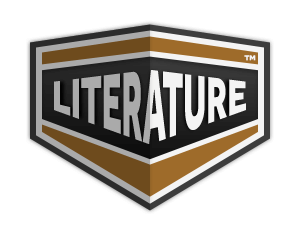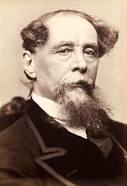The Trial for Murder Page #3
"The Trial for Murder" is a short story by Charles Dickens that delves into themes of justice, morality, and the supernatural. The narrative revolves around a trial where a man is accused of murder, but what unfolds reveals deeper issues surrounding the legal system and the nature of guilt. Dickens combines elements of mystery and a critique of Victorian society, showcasing his adeptness at weaving social commentary into engaging storytelling. The tale raises profound questions about the reliability of witnesses and the pursuit of truth within a flawed judicial system, highlighting Dickens's concern for social justice and the human condition.
I touched the brother jurymen whose place was next me, and I whispered to him, “Oblige me by counting us.” He looked surprised by the request, but turned his head and counted. “Why,” says he, suddenly, “we are Thirt—; but no, it’s not possible. No. We are twelve.” According to my counting that day, we were always right in detail, but in the gross we were always one too many. There was no appearance—no figure—to account for it; but I had now an inward foreshadowing of the figure that was surely coming. The Jury were housed at the London Tavern. We all slept in one large room on separate tables, and we were constantly in the charge and under the eye of the officer sworn to hold us in safe-keeping. I see no reason for suppressing the real name of that officer. He was intelligent, highly polite, and obliging, and (I was glad to hear) much respected in the City. He had an agreeable presence, good eyes, enviable black whiskers, and a fine sonorous voice. His name was Mr. Harker. When we turned into our twelve beds at night, Mr. Harker’s bed was drawn across the door. On the night of the second day, not being disposed to lie down, and seeing Mr. Harker sitting on his bed, I went and sat beside him, and offered him a pinch of snuff. As Mr. Harker’s hand touched mine in taking it from my box, a peculiar shiver crossed him, and he said, “Who is this?” Following Mr. Harker’s eyes, and looking along the room, I saw again the figure I expected,—the second of the two men who had gone down Piccadilly. I rose, and advanced a few steps; then stopped, and looked round at Mr. Harker. He was quite unconcerned, laughed, and said in a pleasant way, “I thought for a moment we had a thirteenth juryman, without a bed. But I see it is the moonlight.” Making no revelation to Mr. Harker, but inviting him to take a walk with me to the end of the room, I watched what the figure did. It stood for a few moments by the bedside of each of my eleven brother jurymen, close to the pillow. It always went to the right-hand side of the bed, and always passed out crossing the foot of the next bed. It seemed, from the action of the head, merely to look down pensively at each recumbent figure. It took no notice of me, or of my bed, which was that nearest to Mr. Harker’s. It seemed to go out where the moonlight came in, through a high window, as by an aërial flight of stairs. Next morning at breakfast, it appeared that everybody present had dreamed of the murdered man last night, except myself and Mr. Harker. I now felt as convinced that the second man who had gone down Piccadilly was the murdered man (so to speak), as if it had been borne into my comprehension by his immediate testimony. But even this took place, and in a manner for which I was not at all prepared. On the fifth day of the trial, when the case for the prosecution was drawing to a close, a miniature of the murdered man, missing from his bedroom upon the discovery of the deed, and afterwards found in a hiding-place where the Murderer had been seen digging, was put in evidence. Having been identified by the witness under examination, it was handed up to the Bench, and thence handed down to be inspected by the Jury. As an officer in a black gown was making his way with it across to me, the figure of the second man who had gone down Piccadilly impetuously started from the crowd, caught the miniature from the officer, and gave it to me with his own hands, at the same time saying, in a low and hollow tone,—before I saw the miniature, which was in a locket,—“I was younger then, and my face was not then drained of blood.” It also came between me and the brother juryman to whom I would have given the miniature, and between him and the brother juryman to whom he would have given it, and so passed it on through the whole of our number, and back into my possession. Not one of them, however, detected this. At table, and generally when we were shut up together in Mr. Harker’s custody, we had from the first naturally discussed the day’s proceedings a good deal. On that fifth day, the case for the prosecution being closed, and we having that side of the question in a completed shape before us, our discussion was more animated and serious. Among our number was a vestryman,—the densest idiot I have ever seen at large,—who met the plainest evidence with the most preposterous objections, and who was sided with by two flabby parochial parasites; all the three impanelled from a district so delivered over to Fever that they ought to have been upon their own trial for five hundred Murders. When these mischievous blockheads were at their loudest, which was towards midnight, while some of us were already preparing for bed, I again saw the murdered man. He stood grimly behind them, beckoning to me. On my going towards them, and striking into the conversation, he immediately retired. This was the beginning of a separate series of appearances, confined to that long room in which we were confined. Whenever a knot of my brother jurymen laid their heads together, I saw the head of the murdered man among theirs. Whenever their comparison of notes was going against him, he would solemnly and irresistibly beckon to me. It will be borne in mind that down to the production of the miniature, on the fifth day of the trial, I had never seen the Appearance in Court. Three changes occurred now that we entered on the case for the defence. Two of them I will mention together, first. The figure was now in Court continually, and it never there addressed itself to me, but always to the person who was speaking at the time. For instance: the throat of the murdered man had been cut straight across. In the opening speech for the defence, it was suggested that the deceased might have cut his own throat. At that very moment, the figure, with its throat in the dreadful condition referred to (this it had concealed before), stood at the speaker’s elbow, motioning across and across its windpipe, now with the right hand, now with the left, vigorously suggesting to the speaker himself the impossibility of such a wound having been self-inflicted by either hand. For another instance: a witness to character, a woman, deposed to the prisoner’s being the most amiable of mankind. The figure at that instant stood on the floor before her, looking her full in the face, and pointing out the prisoner’s evil countenance with an extended arm and an outstretched finger. The third change now to be added impressed me strongly as the most marked and striking of all. I do not theorise upon it; I accurately state it, and there leave it. Although the Appearance was not itself perceived by those whom it addressed, its coming close to such persons was invariably attended by some trepidation or disturbance on their part. It seemed to me as if it were prevented, by laws to which I was not amenable, from
Translation
Translate and read this book in other languages:
Select another language:
- - Select -
- 简体中文 (Chinese - Simplified)
- 繁體中文 (Chinese - Traditional)
- Español (Spanish)
- Esperanto (Esperanto)
- 日本語 (Japanese)
- Português (Portuguese)
- Deutsch (German)
- العربية (Arabic)
- Français (French)
- Русский (Russian)
- ಕನ್ನಡ (Kannada)
- 한국어 (Korean)
- עברית (Hebrew)
- Gaeilge (Irish)
- Українська (Ukrainian)
- اردو (Urdu)
- Magyar (Hungarian)
- मानक हिन्दी (Hindi)
- Indonesia (Indonesian)
- Italiano (Italian)
- தமிழ் (Tamil)
- Türkçe (Turkish)
- తెలుగు (Telugu)
- ภาษาไทย (Thai)
- Tiếng Việt (Vietnamese)
- Čeština (Czech)
- Polski (Polish)
- Bahasa Indonesia (Indonesian)
- Românește (Romanian)
- Nederlands (Dutch)
- Ελληνικά (Greek)
- Latinum (Latin)
- Svenska (Swedish)
- Dansk (Danish)
- Suomi (Finnish)
- فارسی (Persian)
- ייִדיש (Yiddish)
- հայերեն (Armenian)
- Norsk (Norwegian)
- English (English)
Citation
Use the citation below to add this book to your bibliography:
Style:MLAChicagoAPA
"The Trial for Murder Books." Literature.com. STANDS4 LLC, 2025. Web. 22 Feb. 2025. <https://www.literature.com/book/the_trial_for_murder_4399>.








Discuss this The Trial for Murder book with the community:
Report Comment
We're doing our best to make sure our content is useful, accurate and safe.
If by any chance you spot an inappropriate comment while navigating through our website please use this form to let us know, and we'll take care of it shortly.
Attachment
You need to be logged in to favorite.
Log In